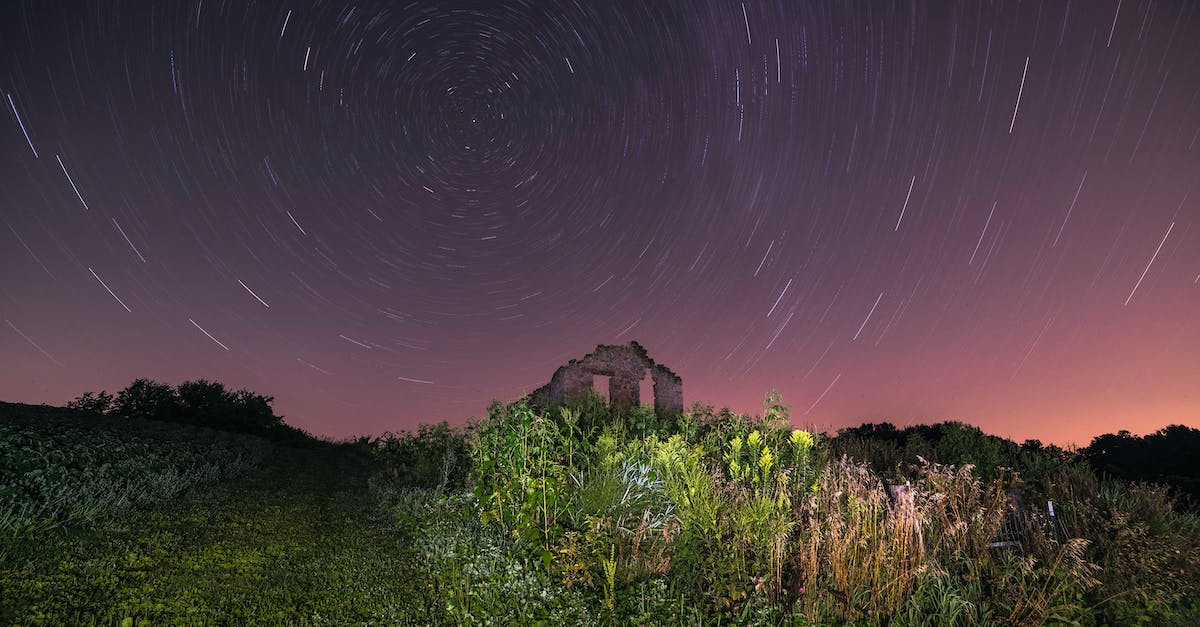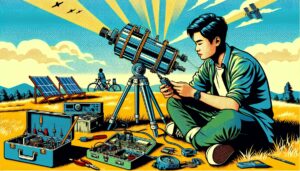This site contains affiliate links to products. I may receive a commission for purchases made through these links.
Ever gazed up at the night sky and wished you could capture its magic? That’s where astro-photography comes in. It’s the perfect blend of travel and photography, letting you explore the world while capturing the universe’s stunning beauty.
Astro-photography tours are gaining popularity, and it’s no surprise why. They take you to some of the most remote, dark-sky locations on the planet, providing a chance to photograph the stars like never before. From the Milky Way’s vibrant band to distant galaxies, the photo opportunities are endless.
But it’s not just about the photos. These tours are an adventure, a chance to immerse yourself in nature and learn from experienced guides. Whether you’re a seasoned photographer or a beginner, you’ll come away with new skills, unforgettable memories, and a deeper appreciation for our incredible universe.
What is Astro-Photography?
Astro-photography is a specialized field of photography dedicated to capturing celestial events and bodies in the night sky. It’s often regarded as both an art form and a science, requiring technical skill, patience, and a keen understanding of the night sky. It offers a unique chance to connect with the cosmos, gazing upon distant galaxies, nebulae, and star clusters. If you’ve ever admired an image of the Milky Way or a glittering starry night, you’ve encountered the mesmerizing results of astro-photography.
One of the key elements of astro-photography is the equipment. While a smartphone or a standard digital camera may be sufficient to capture a quick snap of the moon, serious astro-photography demands specialized gear. This can include:
- High-quality DSLR or mirrorless cameras
- Specially-designed wide-angle lenses
- A sturdy tripod
- Star tracking mounts
Learning to navigate these tools efficiently can elevate your photography experience, allowing you to capture stunning cosmic phenomena like meteor showers or the ethereal Aurora Borealis.
Astro-photography isn’t just about taking pictures of the stars. It’s also about learning the fundamentals of astronomy. Beyond just pointing a camera towards the sky, it’s about understanding where to look, when to look, and how best to capture the celestial sights on offer. Working alongside experienced guides on an astro-photography tour can provide valuable insights into these astronomical elements.
There’s truly something magical about astro-photography. It has the potential to open up a whole new realm of exploration, where the boundless beauty of our universe is truly at your fingertips. In the end, it’s about more than just photography. It’s an opportunity to witness and capture the vast, sprawling spectacle of our cosmos that’s often overlooked in our daily routines.
Benefits of Astro-Photography Tours
Astro-photography tours are not just an exciting opportunity to capture the night sky. They’re also a fantastic way to understand the cosmos in a practical and visually engaging manner.
First, these tours immerse you in a hands-on learning experience. You’ll pick up vital skills and knowledge not only about photography but also about astronomy. Being in a remote, dark-sky location presents a unique chance to learn about celestial bodies, constellations, and cosmos mysteries right in the field. Imagine identifying the Milky Way or the zodiacal light with your naked eye, or spotting meteor showers in real time!
Second, it’s a chance to acquaint yourself with specialized photography equipment. Astro-photography requires specific gear like star trackers, equatorial mounts, ultra-wide-angle lenses, and filters. If you’re a photography enthusiast looking to expand your skills, it doesn’t get better than this.
Thirdly, these tours often go to spectacular, isolated places not typically visited by tourists. So, you’re not only witnessing the grandeur of the universe, but you’re also exploring beautiful, untouched ecosystems.
Moreover, astro-photography tours offer an experience that’s both mentally stimulating and calming. They satisfy your curiosity about the universe while keeping you connected with nature in its most untouched form. It’s an experience I find deeply humbling and awe-inspiring – an encounter with the raw beauty of the universe.
Lastly, the thrill of capturing enchanting images of celestial events is indescribable. Each image you capture is unique, and each requires patience, precision, and the ability to seize the moment. The reward is an iconic photograph of the universe that you can proudly hang on your wall or use in your portfolio.
These numerous benefits might be why astro-photography tours are gaining due popularity. If you’re eager to try one, I encourage you to do the next step: Finding a tour that thrills you to your core.
Top Remote Dark-Sky Locations for Astro-Photography
There’s no denying it: location is key for astro-photography. A remote dark-sky location, free from city light pollution, can bring life to our celestial curiosity, transforming mere photos into riveting tales of the universe. Let’s explore some top dark-sky locations for that perfect astro-photo!
Atacama Desert, Chile
No discussion of dark skies would be complete without mentioning the Atacama Desert. Known as one of the driest places on Earth, it’s practically devoid of any light or air pollution. With its clear skies and unique geographical features, capturing fantastical images of the cosmos becomes a piece of cake here!
Mauna Kea, Hawaii
Mountaintop destinations like Mauna Kea also provide incredible vistas for astro-photography. Standing at an elevation of over 14,000 feet, Mauna Kea’s clear weather conditions and distance from city lights offer photographers unparalleled views of the universe.
Namib Desert, Namibia
Shifting our gaze to Africa, we find the Namib Desert. Remarkably remote and equally rewarding, it’s a dark-sky haven boasting stunning ecosystems and robust wildlife. Perfect for those seeking an eco-astro-photography experience!
Aoraki Mackenzie, New Zealand
Our final stop brings us down under to the Aoraki Mackenzie International Dark Sky Reserve. Essentially, it’s a mecca for stargazers. The stringent light pollution controls in this region ensure bright, visible constellations that are a treat to photograph.
To sum it up, these fantastic locations provide not only jaw-dropping backdrops for our astro-photography endeavors but also serene retreats away from the city’s hustle and bustle. Interest piqued? It’s time to dust off those DSLRs and telescopic lenses for an adventure bound to be etched in stardust. But before we head off, let’s delve a bit deeper into the technicalities of capturing incredible shots of the starry night sky.
Gear and Equipment for Astro-Photography Tours
The core essence of astro-photography isn’t just about the location, it’s also heavily dependent on the gear you equip yourself with. Bear in mind, the best equipment can make a significant difference in the quality and clarity of your shots. Let’s delve into the essentials you need for an optimal astro-photography tour experience.
To start, a DSLR or Mirrorless camera is a must – no compromises here. They offer manual control over shutter speed, aperture, and ISO settings, all of which are critical for capturing stunning stellar shots. Within these categories, there are plenty of robust options available like the Canon 6D Mark II or the Sony A7S series, known for their exceptional low light performance.
The importance of a fast, wide-angle lens can’t be overstated. A lens with a large aperture (smaller f-number) lets in more light, which is paramount when shooting in dark environments. Look for lenses with an aperture of f/2.8 or wider. And, remember, the lower the f-number, the better.
Next up – tripods. You’ll need a sturdy tripod to maintain stability during long-exposure shots. Carbon fiber tripods are a great choice. Lightweight and durable, they’re perfect for outdoor photography.
For crafting those mesmerizing, wide-field astro-photos, an equatorial-mount helps in capturing the movement of stars. This alignment with Earth’s rotation reduces star trails in long-exposure shots, ensuring crisp, clear photos.
Consider packing in a headlamp with red-light mode. You’ll appreciate the hands-free operation and the red-light helps preserve your night vision while adjusting equipment in the dark.
Lastly, external batteries and memory cards make the list. Chilly night conditions can drain battery life, and you wouldn’t want to run out of memory space in the middle of nowhere. So, backup, backup, backup!
| Equipment | Recommendations |
|---|---|
| Camera | Canon 6D Mark II, Sony A7S |
| Lens | Any wide-angle lens with f/2.8 or less |
| Tripod | Carbon fiber models |
| Mount | Equatorial |
| Extras | Headlamp with red-light, extra batteries and memory cards |
Tips for Capturing Stunning Astro-Photography Shots
Embarking on an astro-photography tour is more than just packing your gear and hitting the road. It’s about planning, understanding your equipment, and getting to grips with some key shooting techniques.
Plan Your Shoot
Astro-photography is quite dependent on the weather and celestial events. Clear skies are a must. So, you’ll need to keep a close eye on the forecast. Also, consider the moon phase. A new moon or moonless night is perfect for capturing stars and milky way. There are several apps available that provide data on moon phases and visible celestial bodies.
Understand Your Equipment
Knowing your gear is crucial. Don’t worry if you’re still learning about your camera and lens. Your camera’s manual mode will be your best friend here. This setting allows you to manually adjust ISO, shutter speed, and aperture – the three pillars of photography. Remember, high ISO values may introduce noise while longer exposures can cause star trails due to earth’s rotation. I’d recommend starting with an aperture as wide as your lens allows, shutter speed around 20 seconds, and ISO at 1600. Adjust based on your results.
Compose Your Shot
Good composition can make or break your shots. Use the rule of thirds, balance your shot with interesting elements or use leading lines to guide the viewer’s eye. Including terrestrial elements like mountains, trees, or a person can create eye-catching images.
Shoot in RAW
Always shoot in RAW. This format captures a higher level of detail, necessary for post-processing. You’ll also get better results when you adjust the white balance and reduce noise in editing software.
Don’t rush the process. Astro-photography requires patience and perseverance. Take time to learn and experiment. Your shots may not come out perfect initially, but each attempt will provide valuable learning and take you closer to stunning astro-photography shots.
Conclusion
Astro-photography tours offer a unique blend of travel and photography that’s hard to resist. They’re a chance to explore the world, capture stunning night skies, and hone your photography skills. Remember, planning your shoot, knowing your gear, and composing your shots are key. Don’t forget to shoot in RAW for the best results in post-processing. It’s not always easy, but with patience and perseverance, you’ll see your astro-photography skills skyrocket. So why wait? Pack your camera and embark on an astro-photography tour. It’ll be a journey of discovery and creativity that you won’t soon forget.
Frequently Asked Questions
What is the main focus of the article?
The article mainly offers guidance on how to take eye-catching astro-photography shots. It suggests best practices in terms of planning, using equipment, shooting techniques, and utilizing post-processing tools.
Why does the article recommend shooting in RAW format?
Shooting in RAW format is recommended as it captures all image data from the camera sensor, which ensures the highest quality photos and provides more flexibility during post-processing.
What is the importance of planning in astro-photography mentioned in the article?
Planning is essential in astro-photography because the positions of celestial bodies change over time. Knowledge about their orientation can help determine the best time and place to capture stunning images.
What does the article say about perseverance in astro-photography?
The article encourages patience and perseverance in astro-photography as capturing the perfect shot can be time-consuming and require repeated attempts.
How does understanding our equipment help in capturing better astro-images according to the article?
Understanding your equipment, such as how to adjust camera settings for low light conditions, is crucial for capturing clear, detailed images of celestial bodies. It also enables photographers to maximize their gear’s potential.



